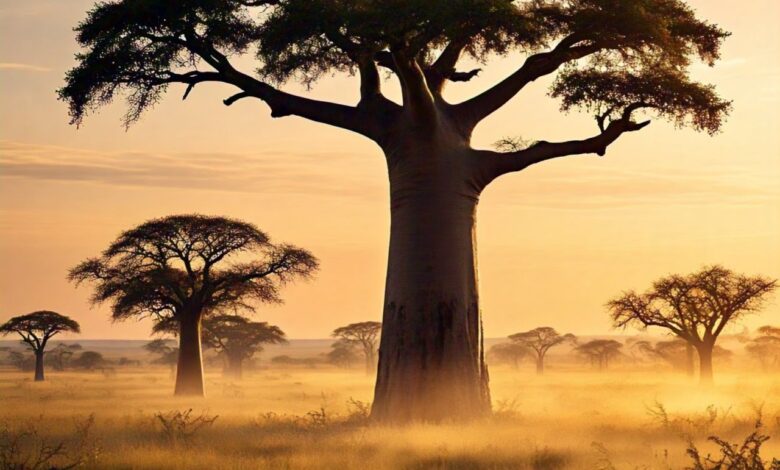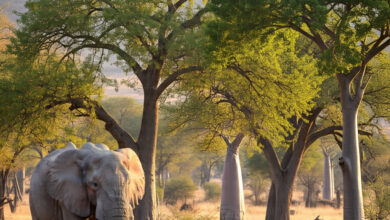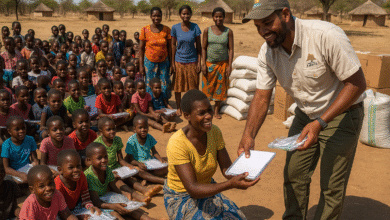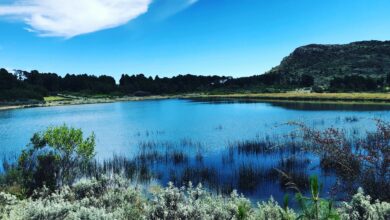Hwange National Park: A Haven for Biodiversity Under Threat

Located in northwestern Zimbabwe, Hwange National Park stands as one of Africa’s most impressive wildlife reserves. Spanning over 14,500 square kilometers, it is not only the largest national park in Zimbabwe but also a crucial haven for biodiversity 4. This vast expanse of wilderness has been home to an incredible array of flora and fauna for centuries, earning its place as a global conservation priority.
A Brief History of Hwange National Park
The history of Hwange National Park dates back to the early 20th century. The area was first inhabited by the San Bushmen, who were later displaced by the Nhanzwa Tribe 4. The name ‘Hwange’ originates from the Nhanzwa chief, Hwange Rosumbani 4.
In 1926, Major W.J Boggie introduced a motion to establish a game reserve in the area 4. This led to the creation of Wankie Game Reserve in 1928, which was later upgraded to national park status in 1930 4. The first warden of the park was Ted Davison, who played a crucial role in its early development.
Current State of Hwange National Park
Today, Hwange National Park stands as a testament to Zimbabwe’s commitment to wildlife conservation. It is home to approximately 45,000 savanna elephants, making it one of the largest elephant populations in the world 1. The park also boasts an impressive array of other wildlife, including the Big Five – elephant, buffalo, lion, leopard, and critically endangered rhinoceros 4.
Birdwatchers flock to Hwange National Park, as it hosts over 400 species of birds 4. The park’s diverse landscape supports an incredible variety of flora, making it a true haven for biodiversity.
Biodiversity: The Heart of Hwange National Park
Biodiversity refers to the variety of different species of plants, animals, and microorganisms that live in an ecosystem or on Earth as a whole. It encompasses not just the variety of species but also the genetic diversity within each species 10. In the context of Hwange National Park, biodiversity is crucial for maintaining ecological balance and ensuring the long-term health of the ecosystem.
However, biodiversity in Hwange National Park faces numerous threats. Habitat destruction due to human activities such as agriculture and urbanisation continues to encroach upon the park’s borders. Climate change affects the delicate balance of the ecosystem, altering migration patterns and food sources for many species.
Human-wildlife conflict also poses a significant threat. As the human population grows, it encroaches upon wildlife habitats, leading to increased confrontations between humans and wild animals 10.
Biodiversity Under Threat
Furthermore, the biodiversity in Hwange National Park is indeed under threat from various factors. Firstly, as human settlements expand, natural habitats are broken into smaller pieces, isolating animal populations and disrupting migration patterns. Secondly, rising temperatures alter vegetation patterns, affecting food sources for many species and altering migratory routes.
Thirdly, despite conservation efforts, poaching remains a significant threat to many species within the park. This poses a significant threat to the park’s biodiversity. Also, as human settlements grow closer to the park’s borders, conflicts between humans and wildlife increase, often resulting in the killing of both humans and animals. Finally, there are lack of resources. Here, the COVID-19 pandemic severely impacted tourism revenue, compromising wildlife protection and management efforts 2.
These threats to Hwange National Park’s diversity are detrimental to the environment. Therefore, intervention to ensure the park’s safety from these threats is crucial.
Conservation Efforts
Despite these challenges, there are ongoing conservation efforts aimed at protecting Hwange National Park’s biodiversity. Firstly, the Zimbabwe Parks and Wildlife Management Authority (ZimParks) works tirelessly to protect and manage the park’s rich biodiversity 1.
Secondly, International organisations such as IFAW support ZimParks’ efforts through capacity building and resource provision 1. Also, the park remains open to tourism, generating revenue crucial for its maintenance and protection.
Additionally, research initiatives continue to study and monitor the park’s ecosystem, informing conservation strategies.
Conclusion
Hwange National Park stands as a beacon of hope for biodiversity conservation in Africa. Its vast expanse and rich wildlife make it a crucial component of Zimbabwe’s natural heritage. However, the threats facing its biodiversity are real and pressing.
As we move forward, it is crucial that we continue our conservation efforts while addressing the root causes of biodiversity loss. By supporting organisations working towards wildlife protection and promoting sustainable land-use practices, we can ensure that Hwange National Park remains a haven for biodiversity for generations to come.
The fight to protect Hwange National Park’s biodiversity is ongoing, and every effort counts. As custodians of nature, we must work together to preserve this incredible ecosystem and all its inhabitants. The future of Hwange National Park depends on our collective action today.




